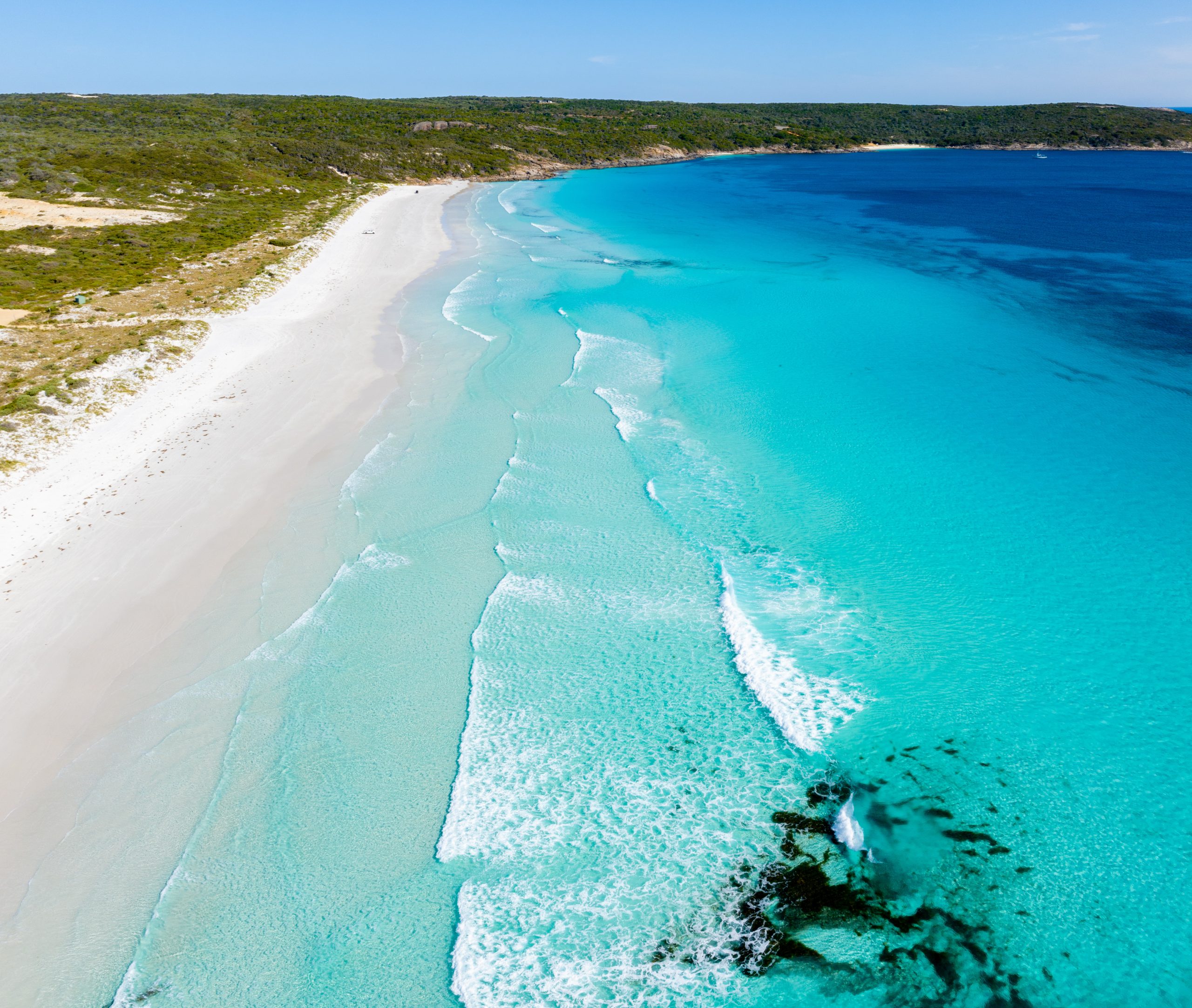The Ultimate Guide to Humpback Whales and all the FAQs you need to know!
What do Humpback Whales Feed on and how do they Feed?
Humpback whales eat krill and small invertebrates known as zooplankton. They feed using a method called lunge feeding—thrusting forward and opening their mouths wide. Their expandable throat grooves stretch like an accordion, allowing them to engulf vast amounts of water filled with prey. They then push the water out through their baleen plates, which trap the krill and zooplankton. After filtering the water, they swallow the captured food.
Humpbacks also target schooling fish like pollock, herring, mackerel, sardines, and anchovies. When these fish are too large to pass through the baleen, humpbacks trap and consume them. Some populations use a coordinated technique called bubble netting. One whale calls from below, scaring the fish upward while releasing bubbles in a circle or spiral. Others flash their white underbellies to herd the fish. Finally, the group lunges upward with mouths open to scoop up the prey.
When do Humpback Whales Feed and how often?
In the Southern Hemisphere, humpback whales feed primarily during summer in the Southern Ocean near Antarctica. While migrating, they occasionally consume baitfish along the way. Antarctic waters offer dense feeding grounds because melting ice releases nutrients that spark plankton blooms.
As humpbacks move toward warmer waters, food becomes scarce. To prepare, they build energy reserves while feeding in Antarctic regions. Each day, they must consume around one tonne of prey to maintain energy levels. A single gulp can hold up to 19,000 litres of water. When bubble netting, they may feed for 12 hours or longer and can gain up to five kilograms per hour when feeding twice daily.
How do Humpback Whales impact the Cycling and Movement of Nutrients in the Ocean?
By consuming krill and zooplankton, which feed on phytoplankton, humpbacks contribute to nutrient cycling in the ocean. Phytoplankton absorb sunlight and carbon, forming the base of the marine food web. When whales defecate, they release iron-rich waste, fertilising surface waters and boosting plankton growth.
Killer whales prey on humpbacks, and when a humpback dies, its body provides nourishment for sharks and other scavengers. These whale falls become ecosystems in themselves, supporting diverse marine life and recycling energy over many years.
Do Humpback Whales hold Cultural Significance in Regions around the World?
Humpback whales hold deep cultural value for many Indigenous communities. In regions like Polynesia and Australia, they feature in legends, totems, and traditional practices. Some Indigenous groups in Denmark, Greenland, Russia, and the United States maintain the right to hunt whales under International Whaling Commission (IWC) regulations.
Why were Whales Harvested during the Whaling Period?
During the commercial whaling era, hunters targeted humpbacks for their oil, baleen, and blubber. People used whale blubber for lamp fuel, lubricants, candles, and cosmetics. Baleen served in the manufacture of corsets, umbrellas, and whips, while their meat was sold for food. Commercial whaling began in the 1600s and spread across all major oceans. Whalers killed about 215,848 humpbacks in the Southern Hemisphere and 33,585 in the Northern Hemisphere. These hunts decimated more than 95% of the global humpback population.
By 1963, the Southern Hemisphere banned humpback whaling, and conservation efforts placed the species on the IUCN Red List to help populations recover.
What are the current threats to Humpback Whales in Australia?
Humpback whales face growing risks from human activities along Australia’s coastline. Entanglement in fishing gear, ship strikes, and increased recreational traffic threaten their safety—especially in protected bays and resting areas. Oil and gas industries use seismic blasts to locate underwater resources, damaging whales’ hearing and disrupting communication.
Excessive ocean noise can interfere with migration, song sharing, and the teaching of young calves. Coastal construction, like marina developments, causes sediment and noise pollution, sometimes forcing whales to avoid traditional resting sites along migration routes.
Where can Humpback Whales be found and what is their Population?
Humpback whales inhabit every ocean on Earth, with global numbers exceeding 140,000 across 14 breeding populations. The Southern Hemisphere alone supports around 97,000 humpbacks. Western Australia hosts the largest group—between 35,000 and 40,000 individuals. Eastern Australia is home to another 30,000 to 35,000 whales.
Since the 1978 whaling ban in Western Australia, the local population has grown steadily—up from fewer than 300 adults. Annual growth rates now range between 10.15% and 13%.
What is the Status of Global Humpback Whale Populations?
Thanks to global conservation efforts, humpback whale numbers have rebounded. In 2008, the IUCN downlisted them from “Vulnerable” to “Least Concern.” Today, Southern Hemisphere populations have recovered to about 70% of pre-whaling numbers. In Australia, humpbacks receive legal protection under both the Environment Protection and Biodiversity Conservation Act (1999) and the Western Australian Biodiversity Conservation Act (2016). In WA, they are considered “conservation dependent,” meaning population health still requires active management.
What are Humpback Whales Characterised and Known for?
Humpbacks are famous for their surface behaviours—breaching, lob-tailing, and pectoral fin slapping. Their pectoral fins are the longest of any whale species, measuring up to 5 metres. Their bodies often host acorn barnacles and whale lice. Tubercles—knob-like structures on their heads and fins—contain sensory hairs that detect movement in the water.
Acorn Barnacles on Humpback Whales
The species Coronulla diadema, a type of acorn barnacle, attaches itself to humpback whale skin. This relationship benefits the barnacles, which filter plankton as the whale swims. During social interactions or fights, barnacles may add weight and increase the impact of whale-to-whale contact. A whale can carry up to 450 kg of barnacles. Most barnacles live for about a year, eventually falling off during migration or at calving grounds.
How long can a Humpback hold their Breath for and why?
Humpback whales can hold their breath for up to 40 minutes, though they usually surface every 5–10 minutes when active. Calves surface more frequently, with a breath hold of around 5 minutes. Humpbacks rely on breath control during feeding, sleeping, and mating, generally staying within 200–300 metres of the surface. Unlike deep-diving sperm whales, humpbacks prefer shallower waters.
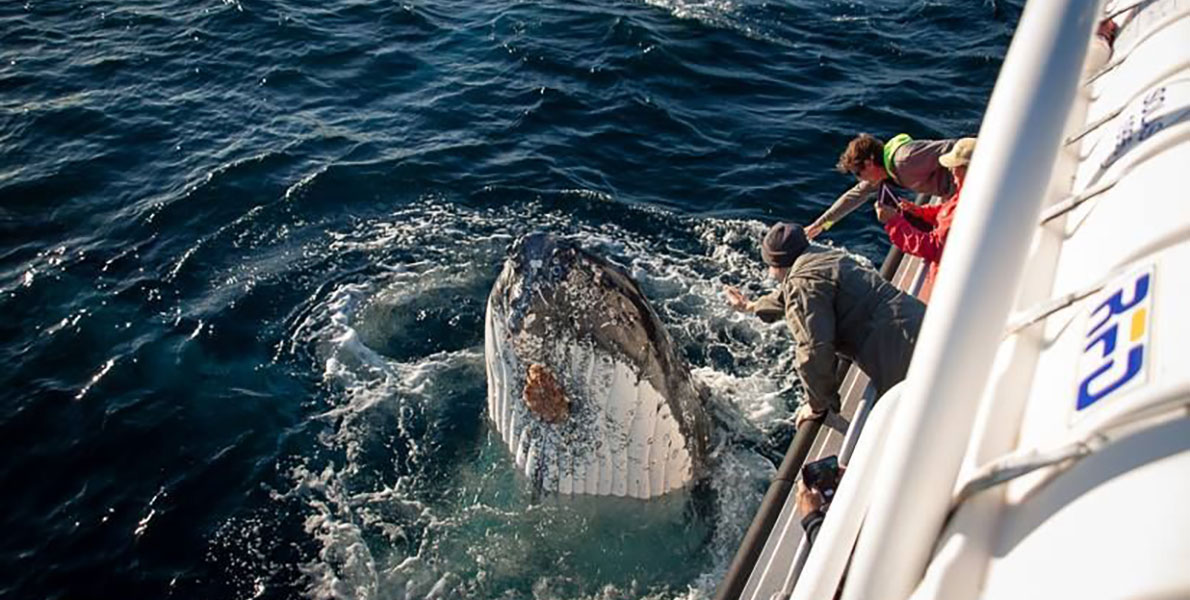
How does a Humpback Whale sleep?
Humpbacks breathe consciously, which means they must actively think about surfacing for air. They rest by shutting down one half of their brain for around 30 minutes at a time. During this period, they remain motionless just below the surface. This behaviour allows them to keep breathing while staying alert to predators and other dangers.
How to Tell a Female Whale Apart from a Male
From the surface, distinguishing between male and female humpbacks proves difficult—unless a calf is present. Females typically grow 1 to 1.5 metres longer than males. Males often show more scars due to barnacles and aggressive interactions. Females have a distinct ‘hemispherical lobe’ behind the genital slit, measuring about 15 cm wide, which males do not possess.
Length and Weight of a Humpback Whale
- Males: Measure 11–15 metres and weigh 25–35 tonnes
- Females: Measure 12–16 metres and weigh 25–35 tonnes
- Max recorded length: 18.6 metres
- Max recorded weight: 40 tonnes
- Calves: Measure 4–4.6 metres at birth and weigh 0.6–1 tonne
Longest Migration by a Humpback Whale
Humpbacks from Western Australia travel up to 13,000 kilometres during their migration. One whale completed the longest recorded journey, covering 18,840 kilometres between the Antarctic Peninsula and American Samoa. Mother-calf pairs often take longer due to frequent rest stops.
Breeding and Birth in the Southern Hemisphere
Western Australian humpbacks breed and give birth during their northern migration through waters warmer than 25°C. Females ovulate between June and November. After a gestation period of 11–12 months, calves are born in alignment with the migration route.
Whale Blows
Humpback whales have two blowholes, one for each lung. Their blows appear bushy and column-like, usually reaching 4–5 metres high, but sometimes soaring up to 10 metres.
Surface Behaviours of Humpback Whales
- Tail Lobbing: Humpbacks throw their tails or peduncles out of the water—possibly as a defence or to communicate.
- Tail Slapping: They repeatedly slap their flukes against the surface, which may help communicate or stun prey.
- Pectoral Slapping: Slapping their long pectoral fins may serve as a signal or help build muscle strength.
- Breaching: They launch themselves out of the water—possibly for play, communication, or to shed parasites.
- Head Lunging: Humpbacks push their heads above water and slap their chins against the surface, likely to relieve itchiness or remove barnacles.
- Spy Hopping: They raise their heads vertically out of the water to observe their surroundings.
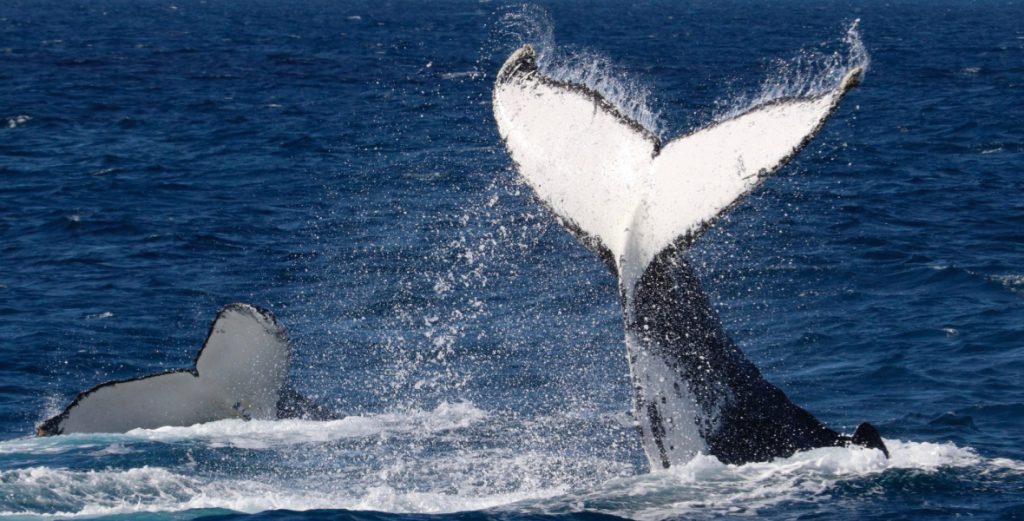
Do Humpback Whales Interact with other Species?
Humpbacks occasionally interact with other marine species, including southern right whales, fin whales, and dolphins. Dolphins often harass or play with humpbacks. Remarkably, humpbacks have also intervened when orcas attack other species like grey whales and seals.
What are the Predators of Humpback Whales and how do they Hunt them?
Sharks sometimes scavenge humpback carcasses and may attack sick, injured, or vulnerable calves. However, orcas (Orcinus orca) pose the greatest threat to humpbacks. Orcas hunt in coordinated pods. One orca may distract a mother by swimming across her head, while others separate the calf. They then guide the calf away using their bodies, sometimes grabbing its tail to drag it underwater or puncturing its side to cause blood loss.
Although not fast swimmers, humpbacks use their agility to fight back. They defend themselves and their calves by tail lobbing—slamming their powerful tails into attackers. These strikes can cause serious injury or even death. During migration, a lone female is often joined by an unrelated male seeking to mate. His presence not only increases her protection but also improves the calf’s survival chances by adding a second adult guardian.
Researchers in Ecuador analysed the scars left by killer whale attacks. Their study revealed that 11.5% of adult humpbacks and 19.5% of calves showed evidence of past encounters.
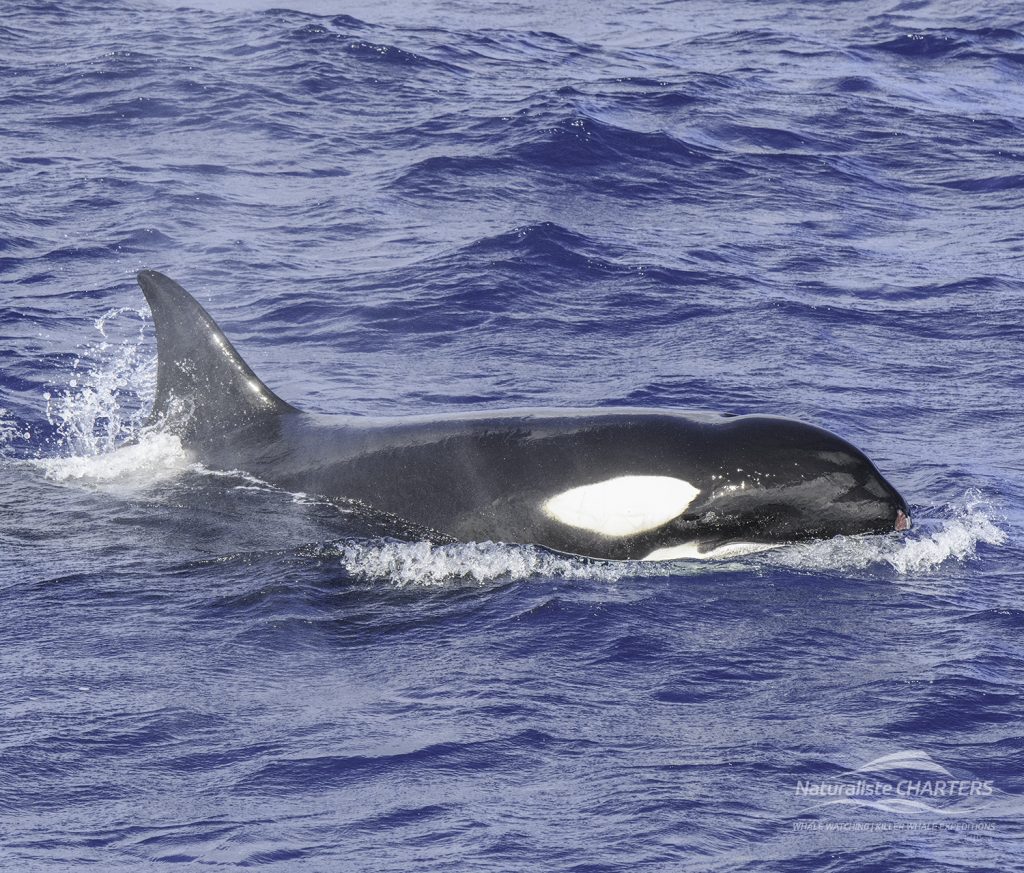
What is a Competition Pod and how does it work?
A competition pod forms when several males pursue a fertile female. Due to a sex ratio of two to three males per reproductive female, this competition becomes essential. One male typically becomes the primary escort, staying within a body length of the female and defending his access to mate. When more males arrive, they join the competition pod, especially if the female is large or in peak fertility. These pods can include over a dozen males.
Competition pods last anywhere from a few minutes to several hours. Males display aggressive behaviours like lunging, lobtailing, bubble blowing, head lifting, ramming, and high-speed chasing. These interactions often lead to injuries.
The female usually leads the pod and may attract more males by making percussive sounds. These calls can draw others in from several kilometres away. Most competition occurs between the primary escort and two or three challengers. Challengers may temporarily cooperate to outmanoeuvre the escort. Either the escort retains his position, or a new male replaces him to stay closest to the female during her oestrous cycle.
What is an Oestrous Cycle?
The oestrous cycle refers to the cyclical ovarian activity that allows female mammals to alternate between receptive and non-receptive phases for mating. Humpback females typically do not ovulate during pregnancy, though ovulation may resume soon after birth—even while nursing.
If a female loses her calf shortly after birth, her oestrous cycle tends to resume almost immediately. For those nursing a calf for the full period, ovulation generally restarts in July, after weaning in late June. In some cases, it can begin just before weaning. The exact timing remains unclear, though most activity occurs during the northern migration from June to November, with peak oestrous activity between July and September.
Are Humpback Whales Monogamous or Polygamous?
Humpbacks are polygamous breeders. They form multiple partnerships over a lifetime and show no long-term loyalty to any one mate. Males do not contribute to calf-rearing but have been observed protecting calves that are not their own in some populations.
How often does a Humpback Whale fall pregnant? What is their sexual maturity? Can they have Twins?
Females usually rear a calf every 2–3 years. They begin ovulating after giving birth and starting lactation. Sexual maturity ranges between 4–11 years, depending on whether the whale reaches 12–15 metres in length—necessary to carry a calf safely. Humpbacks are uniparous, meaning they typically give birth to one calf. Twin births are extremely rare and occur in fewer than 1% of cases.
Do all Humpback Whales Sing?
Only male humpbacks are known to sing. Juvenile males learn songs from surrounding whales, crafting complex vocal sequences over time. They usually sing while hanging motionless below the surface, their pectoral fins extended. These songs last up to 20 minutes and can travel tens of kilometres underwater. Males often repeat the same song for hours, gradually modifying it. Full song cycles evolve every 2–5 years.
Scientists believe singing may help males serenade females, signal their status, attract mates, or communicate with rival males—possibly all of the above.
How long do Humpback Whales Live for?
Estimates place their lifespan between 50–75 years, though the oldest recorded individual reached 95 years.
What is the Gestation Period for Humpback Whales and how do they give Birth?
Humpback gestation lasts 11–12 months. The birthing process is believed to be fast—around 15 minutes. Prolonged births can put the calf at risk of drowning. Calves are born tail first. Once delivered, the mother immediately nudges the calf to the surface to help it breathe. Very few births have been witnessed, so knowledge remains limited.
Do Humpback Whales Breastfeed? How long do they Breastfeed for?
Yes, like all mammals, humpbacks nurse their young. Females have mammary glands but no external nipples. Instead, they release milk into the water through muscular contractions around the mammary slits.
The milk contains 60–70% fat, forming thick clumps that do not dissolve in water. Calves consume it directly from the water column. This fatty milk allows them to gain weight rapidly. Most calves nurse for 6–12 months, often weaning during the Antarctic feeding season.
How many Calves will a Female Whale have in their lifetime? When do Whales Stop Reproducing?
After reaching sexual maturity around age four, females may produce a calf every 2–3 years. With lifespans reaching 75 years, some may birth 20–25 calves. Humpbacks do not experience menopause but may reduce reproductive activity in old age. Scientists still know little about how or when reproductive behaviour tapers off in later life.
Do the Humpback Whales have Families they stay with for Life?
No. Unlike orcas, humpback whales do not remain in lifelong family groups. The only lasting bond forms between mother and calf during the first year. After that, calves become independent. While humpbacks are social and often travel in small groups of 2–10, these associations are temporary. Grouping provides social interaction and protection from predators.
Do you ID the Humpbacks? How can you Distinguish Individual Whales?
Yes. Researchers identify individuals by photographing the underside of their tail flukes. Each fluke shows a unique pattern of black and white markings, scars, and serrations. Dorsal fins also offer clues based on size, shape, and scarring.
Anyone can participate through the citizen science platform HappyWhale. Users upload ID photos and sightings to help track individual whales across time and location. Some humpbacks have been identified and followed for over 40 years!
How do Humpback Whales Communicate?
Humpbacks use a variety of sounds to communicate. They produce moans, grunts, trumpet blasts, and shrieks, along with specialised vocalisations like “throps” and “wops.” Researchers believe “wops” occur between mothers and calves, while “throps” serve general communication. Grunts may signal social activity when groups gather. Through these sounds, humpbacks navigate their environment and connect with one another in complex ways.
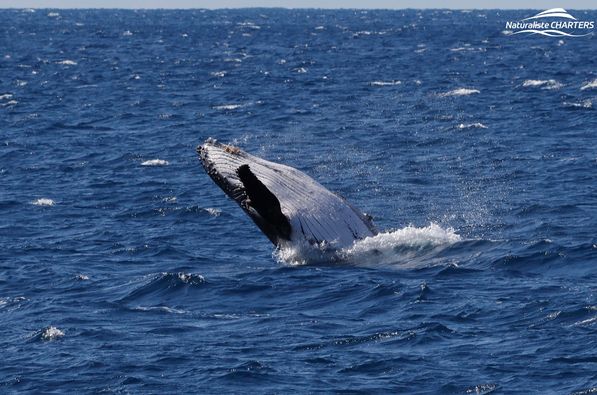
What is the Evolution of Humpbacks Whales?
Whales started to evolve over 50 million years ago. Their ancestors lived on land before becoming aquatic. As their ancestors adapted to living in water, their nostrils slowly shifted back on their snouts. This change led to their nostrils being positioned on top of their heads. When humpback whales swim, they move their tails up and down, as opposed to side-to-side like a fish. This is a side effect of evolving from land mammals. Their backbones did not naturally bend side to side, only up and down
Sizes and Weights of Humpback Whale Body Parts
Whale Brain
A humpback brain can weigh over 6 kilograms, nearly 5 times the weight of a human brain! Patrick Hof and Estel Van der Gucht from Mount Sinai School of Medicine in New York studied the humpback whale brain. They found a type of neuron called a spindle neuron in the cortex, also found in humans. The function of spindle neurons is not well understood. They might be involved in cognition, learning, remembering, and recognizing the world. Spindle cells are affected by Alzheimer’s disease and other brain disorders like autism and schizophrenia in humans. It is unknown if whales can suffer from these disorders.
Whale Lungs
Humpbacks have two blowholes, one for each lung. Each lung is about the size of a small car! A humpback whale’s lungs can hold approximately 5000 litres of air. In humans, our lungs take up about 7% of the body cavity, while a whale’s lungs take up only 3%. Larger lungs in whales would mean more nitrogen absorption, creating toxicity and decompression illness. To prevent this, their lungs are relatively small. Humpbacks adapt to retain as much oxygen as possible while diving.
Scientist Scholander proposed that cartilage surrounding the trachea prevents airway compression under pressure. This allows the alveoli to collapse, reducing gas exchange and preventing high nitrogen levels in the blood. The depth of lung collapse depends on diving lung volume. After alveoli collapse, surfactant is required for re-inflation. In marine mammals, surfactant reduces alveolar surface tension and is produced and released via hormones. In terrestrial mammals, surfactant production occurs via hyperventilation. Through this process, cetaceans can use nearly 90% of the oxygen in each breath, whereas humans can only use about 75%.
Width of tail
The fluke (tail) can be up to a third of body length and it is fully cartilaginous. The width can be up to 5 metres.
Whale Heart
The humpback heart can weigh as much as 199 kilograms! It has been observed that their hearts have large amounts of glycogen. This suggests that their heart tissues can perform better without oxygen than those of land mammals (Pfeiffer, 1990; Pfeiffer and Viers, 1995). The highest heart rate recorded for humpback whales is about 40 beats per minute. This supports the idea that larger animals have slower heartbeats.
Humpback Whale Oxygen Storage and Distribution
Humpback whale blood contains 60% hemoglobin, compared to 30% in humans. Whales have more blood than humans. Their blood makes up 10-20% of their body volume. In humans, blood is about 7% of body volume. Whales store oxygen in their muscles using a protein called myoglobin. The myoglobin levels in whales can be up to 30% higher than in land animals. Myoglobin holds up to 35% of oxygen. This is important for keeping a steady supply to the brain while underwater.
A study in Brazil found humpback whales have up to 13 spleens. These spleens contract during dives, releasing fresh blood with oxygenated red blood cells. During extended dives, when aerobic metabolism is insufficient, whales accumulate byproducts like lactic acid and hydrogen ions. To save oxygen, whales have several body responses. Their heart rate slows down (bradycardia). They also narrow blood vessels to send oxygen to important organs. Their core body temperature drops. They experience low metabolism and can handle low oxygen and high CO2 levels.
Do Humpback Whales Equalise?
Humpback whales have external ear openings on each side of their head. Their dense ear bones resist pressure during dives. A waxy plug blocks seawater from entering the auditory canal. Whales effectively equalize due to flexible material lining their middle ear cavity. When diving, their sinuses flood with blood, reducing air space and allowing equalization. Large Eustachian tubes enable easy air displacement from the mouth to the ear.
Humpback Whale Blowhole
The humpback blowhole developed from nostrils moving to the top of the head. This change helps save energy when breathing at the surface. The blowhole acts like a valve, closing underwater and opening at the surface. A nasal plug covers the nasal passage to the blowhole. It relaxes when underwater and tightens at the surface to allow breathing.
When a whale exhales, a spout is seen, indicating the whale’s presence and often its species. The exhaled air is higher in pressure and warmer than the surrounding air, causing condensation and forming the blow.
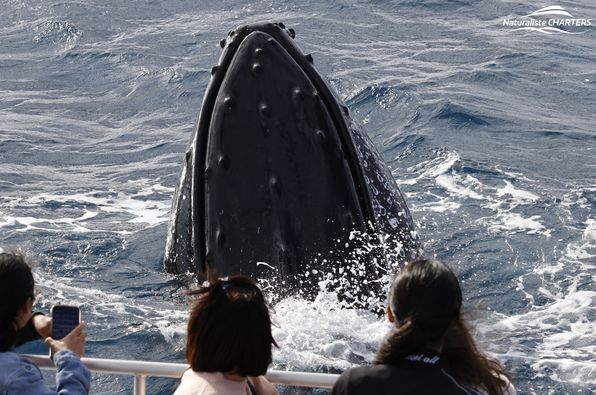
Can Humpback Whales Feel Pain and Emotions?
Humpbacks can feel physical pain and are thought to have a pain tolerance similar to humans. Entangled whales often emit moans and wails of pain and show visible soreness from lacerations. Humpbacks can also feel emotional pain. For instance, mothers mourning the loss of their calves produce wailing sounds.
In Mexico, underwater cameraman Rodrigo Friscone Wyssmann observed a female humpback whale mourning her calf, killed by orcas. The mother sat motionless, while a male escort swam nearby, potentially comforting her. They stayed near the site for nearly a week. Another example happened in Long Island. A lighthouse keeper heard loud, sad whale sounds. This was after a breastfeeding calf washed ashore. The sounds showed that a mother whale was searching for her calf.
Humpback whales have special cells in their brains. These cells are connected to empathy and intuition. This suggests that they can understand and feel for other whales in trouble.
Humpback Whale Placenta
Limited information exists about the placentas of humpback whales. In 1994, researchers in Hawaii found a floating part of the placenta. It measured about 1.2 to 1.5 meters long. The part that was underwater was about 2.4 meters long.
Do Whales Get Periods?
Humpback whales do not menstruate like humans. They have an oestrous cycle. They ovulate and release an egg from June to November. This egg can be fertilized. Mothers can go into heat while nursing or soon after losing a calf. We don’t know much about their heat cycles. The most common cycle happens when a mother does not ovulate after giving birth. Sometimes, she may not conceive even if she is in heat. This leads to having one calf every two years.
How Does a Humpback Whale Umbilical Cord Detach?
There is limited information on whale births, but it is believed that the umbilical cord detaches itself during birth. A placenta found in Hawaii in 1994 had an umbilical cord approximately 5 centimeters wide and 1.3 meters long.
How Often Do Whales Poo and How Much?
Humpback whales eliminate approximately 9.42 kg of nitrogen per day while feeding. They typically release their bowels at the surface when taking a breath. Whale poop is like a loose mix of particles. It helps create the ‘whale pump,’ which brings nutrients to the surface.
Can Humpback Whales Smell?
Whale olfaction is not well understood, and many cetaceans are believed to be incapable of smelling. Marine mammals like whales breathe differently from gill-breathing species like sharks. Whales must hold their breath when they are underwater. Sharks, on the other hand, take oxygen from the water. This helps them ‘smell’ their surroundings through particles that pass over their gills.
How Good is a Humpback’s Hearing?
A study by Tubelli and others found that a humpback whale’s middle ear works best between 15 Hz and 3 kHz. It can also work between 200 Hz and 9 kHz, depending on where the sound comes from. Humpbacks emit sounds of both low and high frequencies, requiring a broad range of sound interpretation.
Do Humpback Whales Get Sick?
Respiratory infections are the most common diseases in cetaceans. Not much is known about how they respond to these infections. Humpback whales can produce mucus in their lungs. This mucus has been seen to be ‘coughed up’ when they exhale at the surface. Cetaceans can contract a range of infectious parasites and diseases, often leading to fatality.
Can Humpback Whales Sneeze and Cough?
Humpbacks do not sneeze or cough as humans do. Their digestive and respiratory systems are separate, unlike humans. Coughing and sneezing typically clear the airways of irritants and mucus, which whales can manage during exhalation.
How Do Humpback Whales Cool Off or Warm Up?
As mammals, humpbacks need energy to stay warm. They warm up through movement, such as breaching or tail slapping. To cool off, they may hold their tail flukes or pectoral fins out of the water. The large surface area allows cool air to pass across their skin, removing heat. This behavior happens in high latitudes where the water is warmer. This is especially true in northern Australian waters during winter breeding.
How Long Does a Whale Calf Stay with Its Mother?
Humpback calves stay with their mothers for the first year of their lives before becoming independent.
What is the Survival Rate of Humpback Whale Calves?
A 2018 study estimated natural calf mortality rates between 15-24% during their early life stage. This rate is likely higher due to predation events by orcas during their first year, which are often not recorded.
Percentage of Successful Orca Predation Events
A 2015 study at Ningaloo Reef recorded 22 orca attacks on humpback whale calves. Of these, 64% ended in kills, while 36% were unsuccessful. Satellite-tagged data showed orcas attacked eight humpback calves, with 43% of known outcomes resulting in kills. All attacks targeted yearlings or calves; orcas left immediately if no calf was present.
Length of a Humpback Whale’s Penis
At puberty, a humpback whale’s penis averages just over 1 metre. In sexually mature males, it ranges from 0.97 to 1.88 metres.
Speed of Humpback Whales
Humpback whales can swim as fast as 27 km/hr. However, they usually cruise at speeds between 3.8 and 14.3 km/hr.
Why Do Humpback Whales Breach? Does it Require Lots of Energy?
Humpbacks breach for various reasons. Calves and sub-adults breach as a form of play. Breaching also helps cleanse and exfoliate dead skin cells and parasites. It relieves itchiness, with the force of hitting the water aiding in alleviating irritation. Adults may breach for communication over long distances.
Experience Humpback Whales with Naturaliste Charters
Experience Humpback Whales from May to November in the beautiful Margaret River region, Western Australia, with Naturaliste Charters. Naturaliste Charters is the first Whale Watching Company in South West, Western Australia. We take pride in offering a fun, educational, and inspiring Whale Watching experience. Join them from May to August in Flinders Bay, Augusta, and from August to November in Geographe Bay, Dunsborough.



